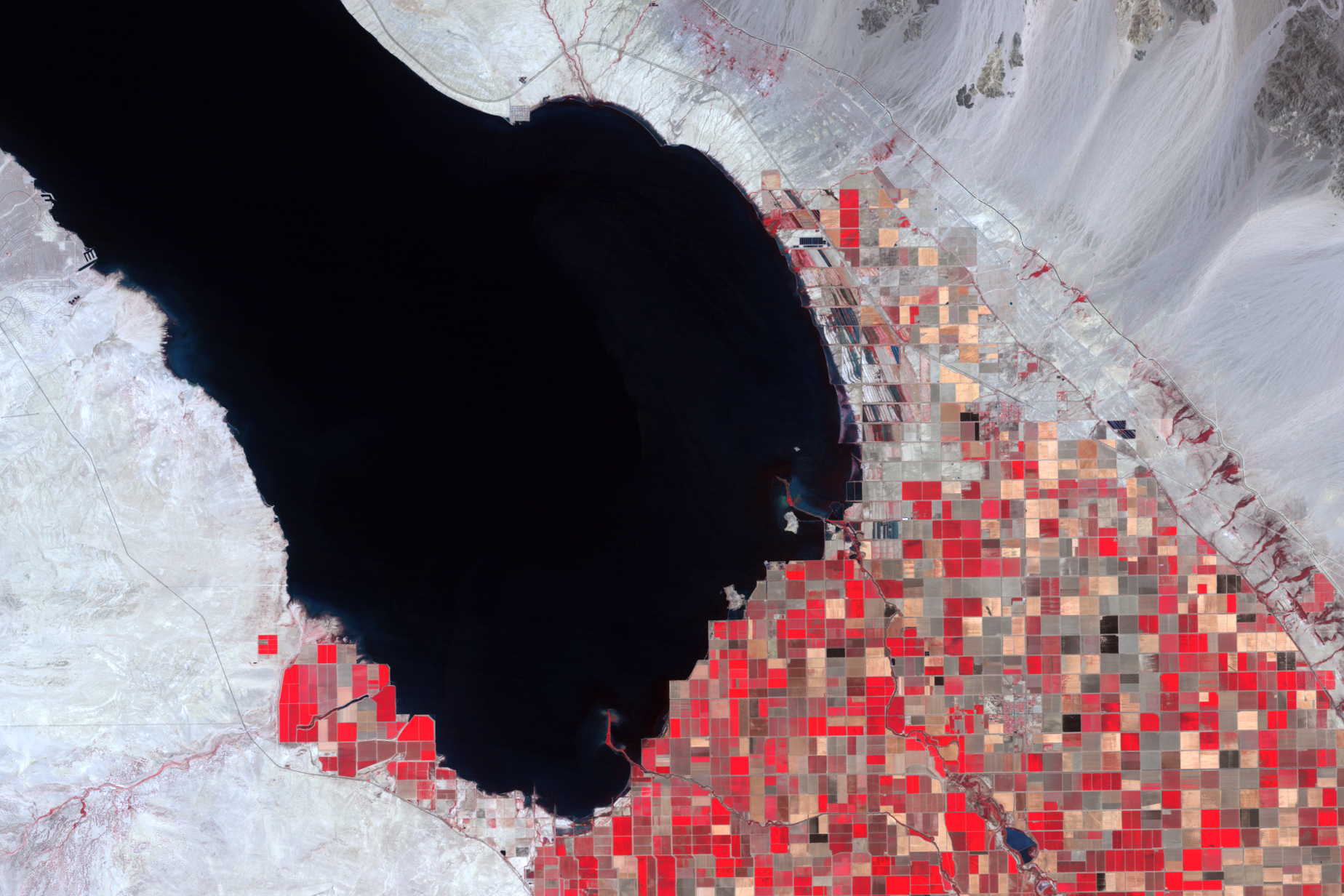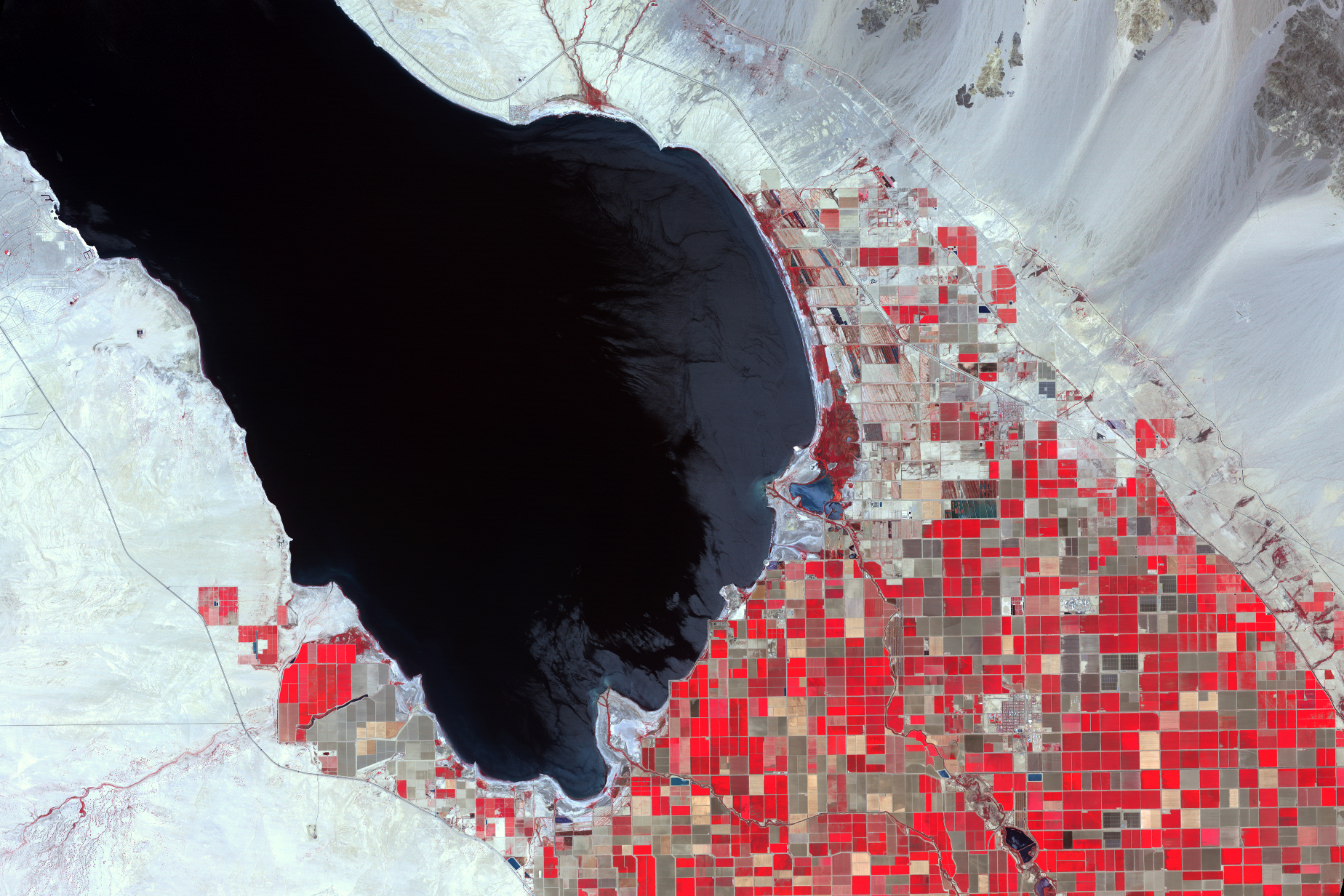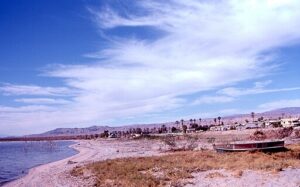The Salton Sea was created when flood waters from the Colorado River breached irrigation canals in the Imperial Valley in 1905. The full might of the river flowed into the Lake Cahuilla basin for 17 months. When the breach was finally closed, the Salton Sea’s surface area spanned 520 square miles. California’s largest lake was created.
The Salton Sea enjoyed a brief heyday. At its peak, “California’s French Riviera” saw more visitors than Yosemite National Park, and millions of birds starting using the lake as an increasingly critical stop-off on the Pacific Flyway.
But the lake loses approximately one million acre-feet of water a year to evaporation, and the ever-increasing salinity of the lake and accumulated pollution from decades of agricultural runoff has had devastating effects on the health and wealth of the region.


Fish and birds die off in droves, and the exposed lakebed is covered in carcasses and laden with pesticides. Desert winds pick up the toxins and deposit them into the lungs of the people who still live in the area, contributing to the highest asthma-hospitalization rate in the state. These dust storms – and the pervasive, noxious smell of the shrinking sea – could lead to a total economic loss of up to $8.6 billion in the Greater Palm Springs region.
“I want to see change. As you can see, it’s drying up and it’s releasing a lot of toxic, hazardous dust into the air. I just don’t get why it’s taken so long for people to stand up and do something.” Ramon Marquez, 18
Now with its yearly inflow of water coming to an abrupt halt at the end of 2017, the Salton Sea nears a dangerous tipping point “that will see a dramatic shrinking of the water body, devastating its rich ecosystem and imperiling the health of hundreds of thousands of people in the region.”

Although progress at the Salton Sea has tended to come in fits and starts, California’s new 10-year, $383 million plan offers the lake a real ray of hope for the future. The plan includes creating thousands of acres of ponds and wetlands to preserve vital avian habitats, and to help combat toxic dust storms in the area. Also, the Water Funder Initiative pledged to aim for $10 million over five years to support implementation of a comprehensive plan to protect public health and the environment, enhance drought resilience, and promote renewable energy and restoration at the Salton Sea.
Brian Wilcox, Assistant Secretary for Salton Sea Policy, says: “We’re behind. There isn’t any question about it. You can look up over my shoulder to see that. But I think we’re in a place now where we can get caught up.”
If you’re interested in learning more about the Sea and the wide-reaching impacts of this crisis, we welcome you to visit California’s Dying Sea, a truly outstanding multimedia project produced by The Desert Sun and USA TODAY Network in collaboration with the University of Southern California Annenberg School for Communication and Journalism’s JOVRNALISM class. Launched in June 2017, this immersive storytelling experience features a four-part series by Desert Sun journalists along with seven virtual-reality stories in 360-degree video produced by USC student journalists in partnership with The Desert Sun. [Video via The Dying Salton Sea | The Desert Sun]
Salton Sea update as of May 2018, via Desert Sun: “California’s Natural Resource Agency is considering proposals that could revive an idea once thought of as impossible. The agency put out a call for “Sea to Sea” project proposals last December, and by their March 9 deadline, they received eleven responses.”